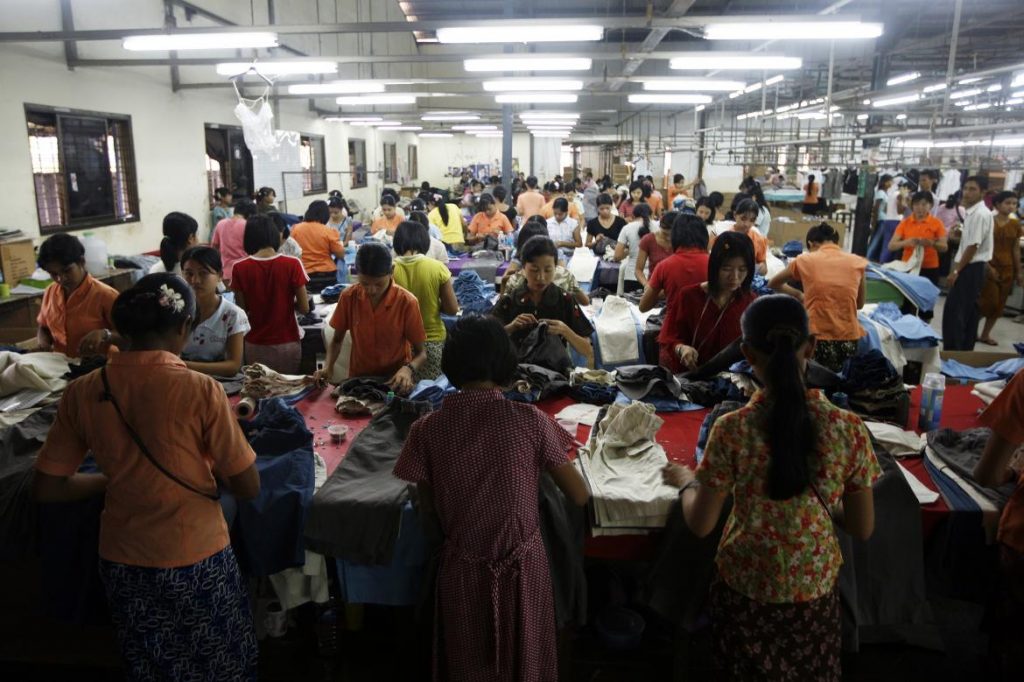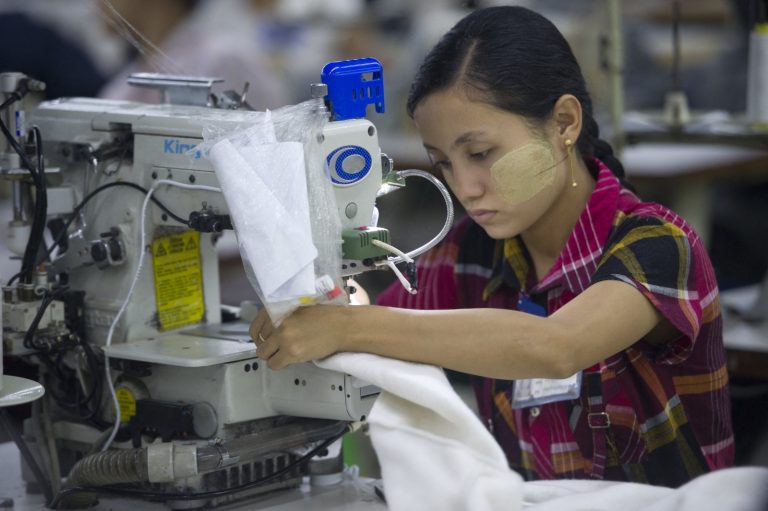By KYAW LIN HTOON | FRONTIER
YANGON — A survey of workers in Myanmar’s booming garment sector has found that most are single Bamar women aged between 18 and 23 in a union-shy workforce that earns an average of about K120,000 a month, including overtime.
The comprehensive survey was conducted in June and July by Enlightened Myanmar Research Foundation (EMReF) and Andaman Research and Advisory for Switzerland-based C&A Foundation, the charity arm of a European fashion chain.
The survey’s findings are outlined in a report released in Yangon on December 12 based on interviews with 778 garment industry workers, 94 percent of whom are women, at industrial zones in Yangon’s outer western Hlaing Tharyar and Shwepyithar townships.
The 76-page report aims to fill a gap in information about the demographics and economic standing of workers in the sector, which has achieved rapid growth in recent years. The sector’s workforce rose from 110,000 to more than 250,000 between 2012 and 2016, over which period the value of exports climbed from US$912 million to $1.46 billion, the report said.
Support more independent journalism like this. Sign up to be a Frontier member.
The survey reveals that young women from rural villages are the main source of labour for garment factories. About 75 percent are Bamar and many have migrated from Ayeyarwady, Bago, Magway and Mandalay regions. A significant proportion, 19 percent, are Rakhine, the second biggest group by ethnicity.
Most are employed to sew garments, 99 percent work six days a week and 90 percent for between eight and 10 hours a day, most have had their current job for up to three years and for 60 percent it was their first job in the industry.
The survey found that 54 percent of the respondents had heard about unions but 56 percent did not understand their purpose, and 33 percent were aware of a grievance mechanism at their workplace. Of those with access to unions, only 15 percent, were members, and of those aware of unions, 52 percent said they would not join and 42 percent said they would.
“This is a reflection that unionization is not currently understood as a necessary positive or something worth investing limited free time and resources in,” the survey found.
Many workers remain vulnerable to exploitation, the report said, referring to findings that for 86 percent of respondents, the only written evidence of their position was being identified on ID cards as an employee, and only 29 percent had a written contract.
Citing findings that 83 percent of respondents owned a smart phone, EMReF program manager Ma Aye Lei Tun said unions could use the devices to raise awareness about labour issues and other stakeholders could use them to provide industry information, such as job vacancies.
“Most of the workers are scared to join labour unions or to explore their rights,” said Aye Lei Tun, adding that mobile applications offered an effective way for unions and other stakeholders to communicate with garment workers.







